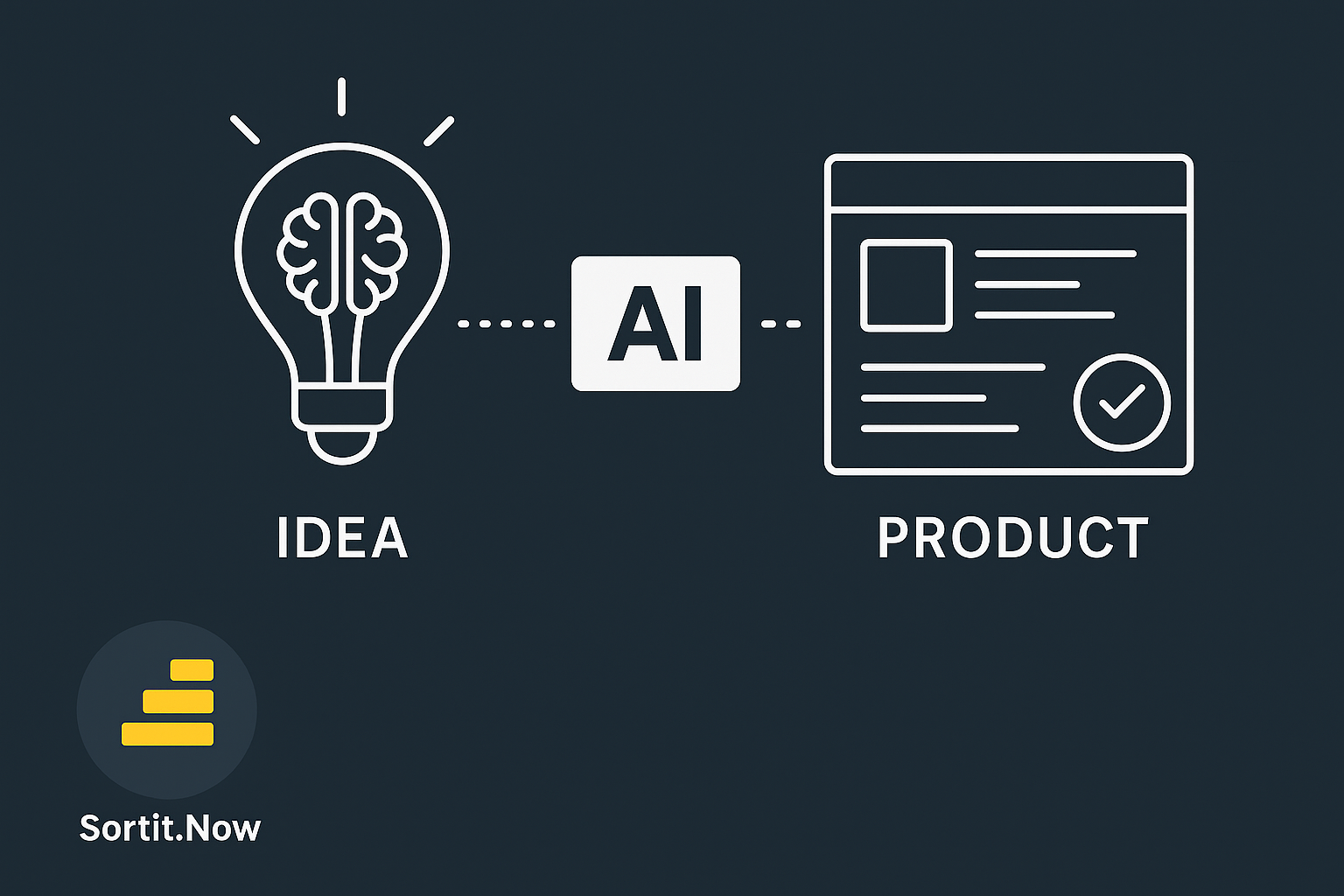The dream that never had time
Like many developers, I have a notebook full of product ideas that never see daylight. Between a full-time job, family, and life in general, it feels impossible to sit down for months to code something big. Still, the itch never goes away. I'm not just a developer, I'm someone who thinks in terms of products. Years ago, I even built a startup, so the passion has always been there.
The problem is time. And that's where AI came into play.

The first prompt
I didn't write a requirements doc. I didn't sketch wireframes. I opened Cursor and wrote:
Create an electron app that can be installed in a Mac. The app will have a list of projects. Every project needs a title mandatory and a status mandatory (Todo, in progress, done) and optional categories (like tags, allowing multiple categories) and description. I want to be able to add actions to every project so when I click the drop-down button of each project, I will see a timeline with all the actions I have added to the project in order from the most recent to the oldest.
That was it. And a few minutes later, I had a running Electron app. I could create projects, add tasks, track actions on a timeline. It was ugly, but it worked. And for the first time, I thought, "wow, maybe I can actually ship something."
The magic of the first days
Those first days felt like cheating. I'd ask for something, and it would appear in the app.
- Add tasks to projects? Done.
- Show actions as a timeline? Done.
- Allow categories and descriptions? Done.
- Add a module to keep track of people I work with? Also done.
The loop was addictive. Think of an idea, type a sentence, see it running. It was the fastest I had ever built anything, and I wasn't even looking at the code.
The time math that shouldn't work
I worked about 2 to 3 hours per day, not even every day, over 77 days. That's less than 200 hours total. Normally that gets you a prototype or maybe a half-finished app. But by the end I had:
- A desktop app built on Electron and Vanilla JavaScript.
- Projects with tasks, actions, categories, descriptions.
- A people module to assign and follow up with.
- A calendar with different views and drag and drop functionality.
- A timeline witth all my actions.
- Google OAuth integration, approved by Google.
- A website explaining the app.
- A product with a philosophy, not just a feature list.
All built with no budget, just me and AI.
The first cracks
It wasn't all fun. AI was fast, but it was also careless. Sometimes I'd ask for a small feature and something else would break. Sometimes it ignored what I asked and invented its own way of doing things.
At that point, I didn't care. The speed was addictive, and I kept pushing. But frustration was already creeping in. Little bugs here and there. Small inconsistencies. Weird behaviors that I didn't fully understand. It felt like riding a rocket where you can't quite control the direction.
That's a story for the next article, but the frustration was real even during the honeymoon.
The product takes shape
Despite the chaos, the product was taking shape. The combination of projects, tasks, actions, and people became the core of Sortit.Now. That wasn't exactly what I envisioned at the beginning, but that's the beauty of building fast: the product evolved as I used it.
Some features felt obvious once I had them. For example, the actions timeline. Seeing a reverse-chronological list of everything that happened in a project gave me instant clarity. Or adding the people module, which at first I thought was "nice to have" but quickly became essential. These weren't in the original idea, but they became part of what made Sortit.Now work.
Falling in love with the process
By day five, I was hooked. I'd sneak in prompts while cooking, cleaning, or even watching TV with my family. It was too easy and too fun not to. The app grew fast, and with every little feature I felt more like I was onto something real.
Normally, building a product solo is slow and painful. With AI, it felt fast and playful. I wasn't just coding, I was dreaming and watching those dreams appear in front of me.
Closing
In 77 days, with only a couple of hours most nights, I went from an idea in my head to a real product I could use and share. It wasn't smooth, and the cracks were already showing, but for the first time in years I didn't just imagine a product, I built one.
In Part 2, I'll share what happened when the speed collapsed under its own weight, when I looked under the hood and found 5,000 lines of spaghetti code in a single file, and how I had to turn from "idea guy" into "tech lead" just to keep the dream alive.